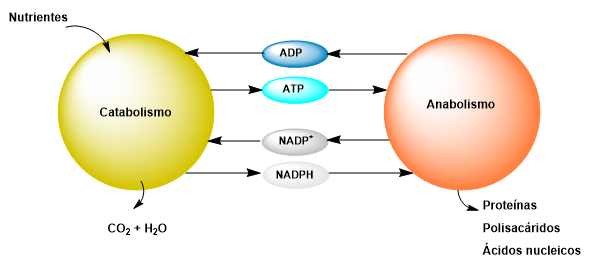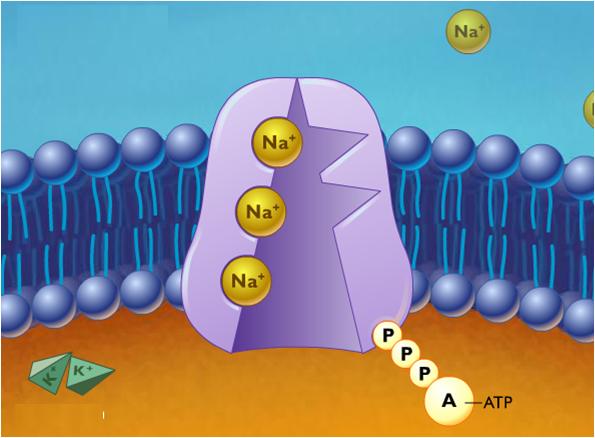
Metabolism encompasses all the biochemical reactions that take place within a cell. These reactions are catalyzed by enzymes, and many of them are coupled, meaning the product of one reaction is the reactant for the next. Therefore, many reactions can be grouped into biochemical pathways.
Pathways dedicated to the biosynthesis of macromolecules from their basic constituents are called anabolic. For example, protein synthesis from amino acids or the synthesis of DNA or RNA from nucleotides. These pathways require an energy input that can come from solar radiation or the degradation of other macromolecules.
The second type of pathways are catabolic, responsible for degrading large molecules to obtain energy that is supplied to anabolic processes.
Catabolic processes degrade nutrients storing energy in ATP molecules and reducing power in NADH that drive the anabolic biosynthesis reactions, resulting in waste products such as carbon dioxide and water.
The cell is a complex and highly ordered system, the energy stored in ATP molecules contributes to maintaining this order and is used in different processes:
- Synthesis of biomolecules. The breaking of the phosphoanhydride bonds in ATP molecules releases the necessary energy to drive the chemical reactions that synthesize the biomolecules which will later assemble to form proteins, lipids, nucleic acids.
 Transport across membranes. The plasma membrane acts as a selective barrier allowing only certain substances into the cell. Organelles also have membranes through which molecules and ions are transported. For example, mitochondria have a membrane that allows fatty acids to pass through for degradation and energy generation. This transport is carried out through protein complexes embedded in the membrane and always requires energy if the transport is against a concentration gradient.
Transport across membranes. The plasma membrane acts as a selective barrier allowing only certain substances into the cell. Organelles also have membranes through which molecules and ions are transported. For example, mitochondria have a membrane that allows fatty acids to pass through for degradation and energy generation. This transport is carried out through protein complexes embedded in the membrane and always requires energy if the transport is against a concentration gradient.
For example, the sodium-potassium pump is a protein complex in the plasma membrane that maintains a low sodium and high potassium concentration inside the cell. To achieve this, sodium cations must be pumped out of the cell, which implies an energy expenditure. For every three molecules of ATP consumed, three sodium ions are pumped out of the cell and two potassium cations are pumped inside.
- Waste elimination. Cellular metabolism produces waste (CO2, H2O, NH3) that must be eliminated. CO2 and H2O are easy to eliminate, through respiration and filtration in the kidneys. However, ammonia requires a biochemical cycle to convert it into urea.

